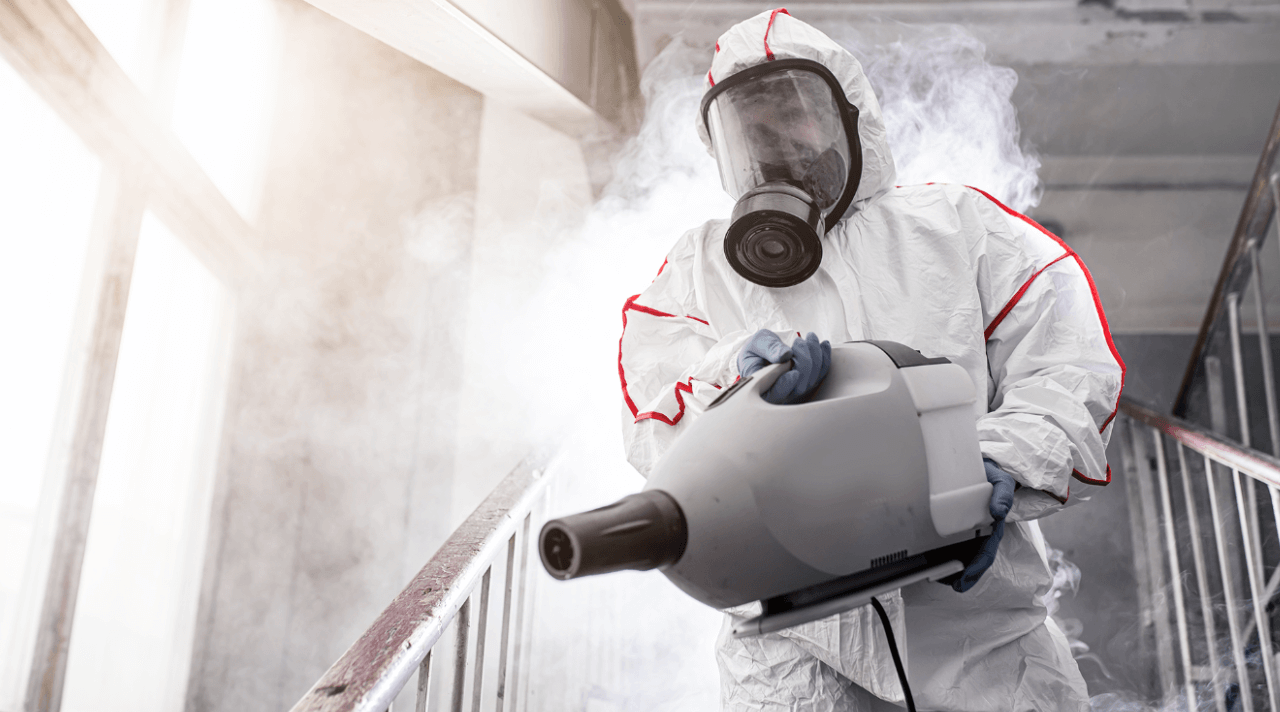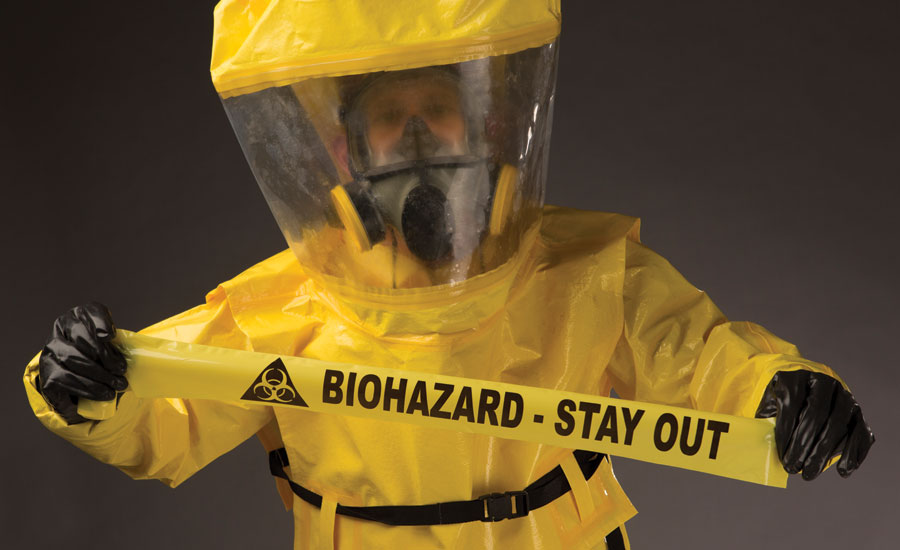Sewage Cleanup Services: Fast and Safe Remediation of Contaminated Locations
Sewage Cleanup Services: Fast and Safe Remediation of Contaminated Locations
Blog Article
Specialist Biohazard Cleansing and Purification for Blood, Bodily Fluids, and Hazardous Materials
In the world of biohazard cleansing and purification for blood, bodily liquids, and unsafe products, precision and competence are critical. The possible health and wellness risks connected with direct exposure to biohazards highlight the essential need for careful handling and complete cleaning. Specialized training gears up specialists with the expertise and abilities necessary to attend to these harmful situations effectively. Nonetheless, it is not just about cleaning up; the importance of utilizing appropriate decontamination strategies can not be overstated. As we browse the detailed landscape of biohazard cleanup, recognizing the subtleties of policies, conformity, and the customized tools at play comes to be imperative in making certain a extensive and safe purification process.
Health And Wellness Threats of Biohazard Direct Exposure
Exposure to biohazards presents significant wellness dangers that can result in serious effects for people and neighborhoods alike. Biohazards incorporate a large range of biological substances, including blood, bodily fluids, mold, germs, infections, and other potentially contagious materials. When people enter into call with these biohazards, whether via crashes, improper handling, or ecological direct exposure, they encounter the danger of contracting serious ailments or conditions.
Among the main health and wellness threats related to biohazard direct exposure is the transmission of contagious illness. Bloodborne virus such as HIV, hepatitis B and C, and various germs can be existing in biohazardous products, presenting a straight danger to human health and wellness. Inhaling airborne biohazards like mold spores or entering into contact with infected surfaces can also bring about respiratory problems, allergic reactions, and various other negative health effects.
Additionally, biohazard exposure can have lasting health and wellness implications, with some conditions materializing years after the initial contact (Blood Cleanup). Consequently, it is vital to focus on appropriate biohazard cleaning and purification to alleviate these wellness threats and guarantee the security of areas and people

Specialized Educating for Biohazard Clean-up
When it involves handling biohazard clean-up effectively and securely, specialized training plays a basic duty in ensuring proper purification treatments are adhered to. Biohazard clean-up calls for certain knowledge and skills to efficiently mitigate dangers related to bloodborne microorganisms, physical fluids, and dangerous products. Professionals trained in biohazard cleanup go through strenuous guideline on just how to securely take care of, get rid of, and get rid of biohazardous materials to stop contamination and direct exposure.
Specialized training for biohazard cleanup covers a variety of vital topics, including appropriate individual protective tools (PPE) use, bloodborne microorganism recognition, decontamination methods, and contaminated materials disposal protocols. People learnt biohazard clean-up are furnished with the essential proficiency to assess contamination degrees, determine possible dangers, and implement suitable cleanup procedures in conformity with governing standards.
Constant training and education are paramount in the area of biohazard cleanup to remain upgraded on the newest decontamination technologies, safety methods, and laws. By investing in specialized training, biohazard cleaning experts can properly respond to emergency situation clean-up scenarios and secure both public wellness and the environment.
Value of Appropriate Decontamination Techniques
Utilizing appropriate decontamination techniques is essential in biohazard clean-up to properly remove unsafe products and decrease health and wellness find out here threats. Effective decontamination not only ensures the elimination of visible traces of blood, bodily fluids, and other biohazards yet also targets undetectable microorganisms that might present serious wellness risks if not appropriately gotten rid of. By following rigorous decontamination methods, trained professionals can dramatically reduce the danger of exposure to dangerous bacteria, viruses, and germs that can lead to illness or infections.
Proper decontamination techniques involve the usage of specific tools and disinfectants that are specifically created to neutralize biohazards successfully. Complete cleansing and disinfection of infected areas are vital to avoid the spread of pathogens and guarantee a secure setting for residents. Additionally, the appropriate disposal of biohazardous waste following purification procedures is essential in protecting against contamination of various other surface areas or people.

Devices and Tools for Safe Cleanup
The correct equipment and tools play a critical role in making certain the secure and effective cleaning of biohazardous products. When handling blood, bodily fluids, or hazardous materials, biohazard cleaning professionals rely upon specialized equipment to minimize exposure risks and thoroughly decontaminate the affected area. Individual protective tools (PPE) such visit site as handwear covers, masks, safety glasses, and coveralls are necessary to secure against straight call with possibly contagious products. Additionally, biohazard cleaning sets including disinfectants, absorbent products, and biohazard bags are used to securely have and dispose of infected items. Blood Cleanup.
Advanced cleaning tools like hospital-grade disinfectants, HEPA-filtered vacuum cleaners, and fogging equipments are employed to sterilize surface areas and get rid of biohazards successfully. Specialized tools such as sharps containers and biohazard waste disposal containers are utilized to securely handle sharp items and biohazardous waste products. By making use of the right equipment and devices, biohazard cleansing experts can ensure a comprehensive clean-up process that prioritizes safety and decreases health dangers for both workers and occupants of the damaged area.
Regulations and Compliance in Biohazard Cleansing
Appropriate adherence to policies and compliance standards is paramount in biohazard cleaning to ensure the safety of both employees and the atmosphere. Federal government agencies such as OSHA (Occupational Safety and Health Administration) and the EPA (Epa) have established specific guidelines for biohazard cleanup procedures to minimize wellness dangers and ecological contamination. These regulations cover a series of elements including the handling, transportation, and disposal of biohazardous materials, along with the needed training and protective equipment needed for employees associated with the cleaning process.
Biohazard cleaning firms must stay updated with these guidelines to assure that their operations meet the required safety and security standards. Failing to abide by these policies can cause serious effects, consisting of penalties, lawsuit, and threatening the health of people and the atmosphere. By following rigid guidelines and compliance steps, biohazard cleansing companies can effectively reduce risks and guarantee a risk-free and comprehensive cleanup process for all events involved.
Final Thought
To conclude, biohazard cleansing and purification need specialized training, proper strategies, and adherence to regulations. Exposure to blood, physical fluids, and dangerous materials poses significant wellness dangers, making it vital to use the right devices and tools for secure cleanup. By complying with strict procedures and guidelines, specialists can successfully browse this site mitigate the dangers connected with biohazard direct exposure and make sure the safety of both themselves and others.
As we navigate the intricate landscape of biohazard clean-up, recognizing the nuances of guidelines, conformity, and the customized devices at play becomes imperative in making certain a secure and complete purification procedure. (Blood Cleanup)
When it comes to dealing with biohazard cleanup successfully and safely, specialized training plays a fundamental duty in ensuring proper purification treatments are adhered to.Utilizing appropriate decontamination methods is important in biohazard clean-up to efficiently get rid of dangerous products and decrease wellness dangers. Additionally, biohazard cleansing kits having anti-bacterials, absorbing products, and biohazard bags are made use of to securely consist of and get rid of of polluted things.
Federal government firms such as OSHA (Occupational Security and Health And Wellness Management) and the EPA (Environmental Defense Company) have developed details standards for biohazard cleaning procedures to minimize health and wellness threats and environmental contamination.
Report this page